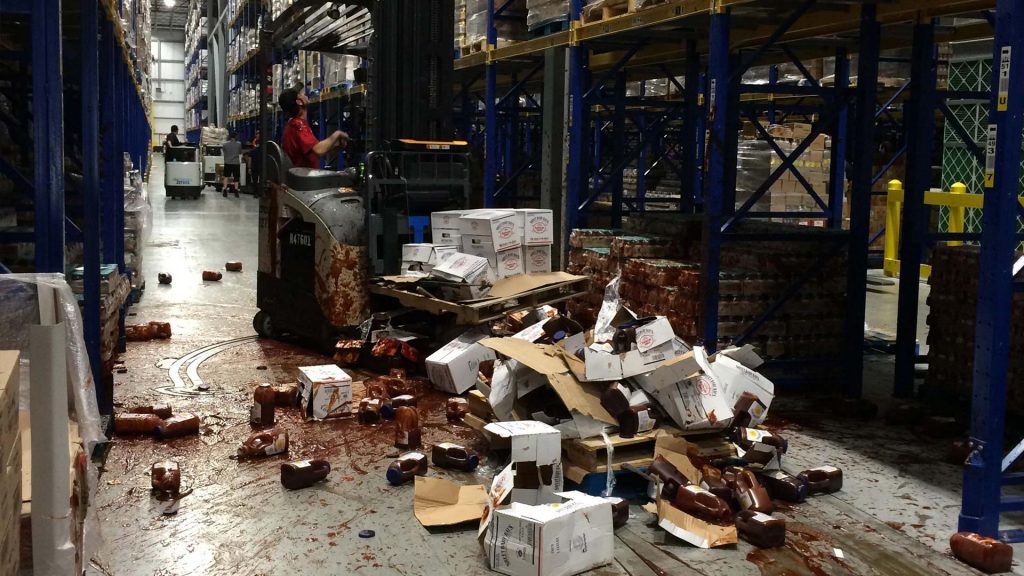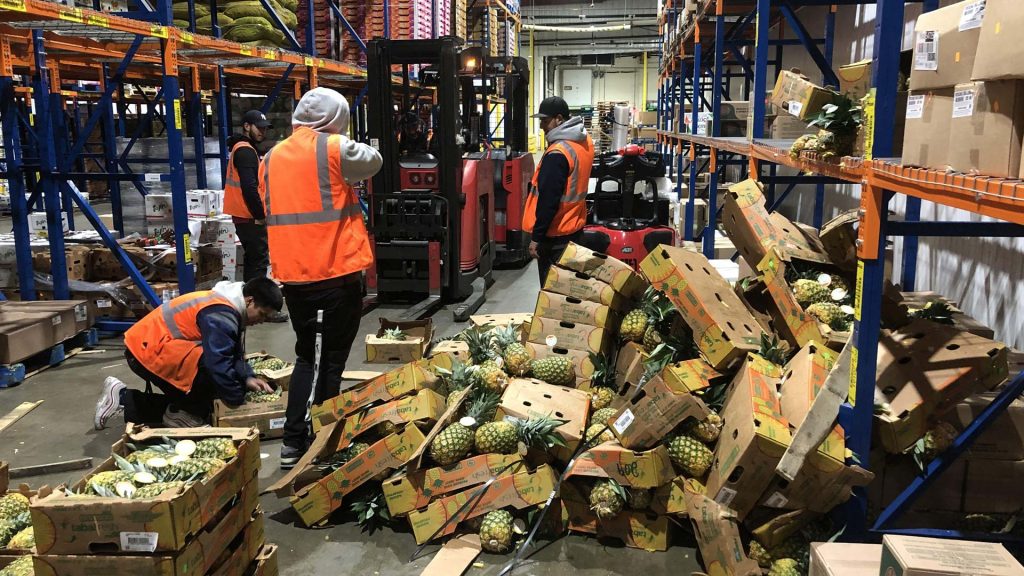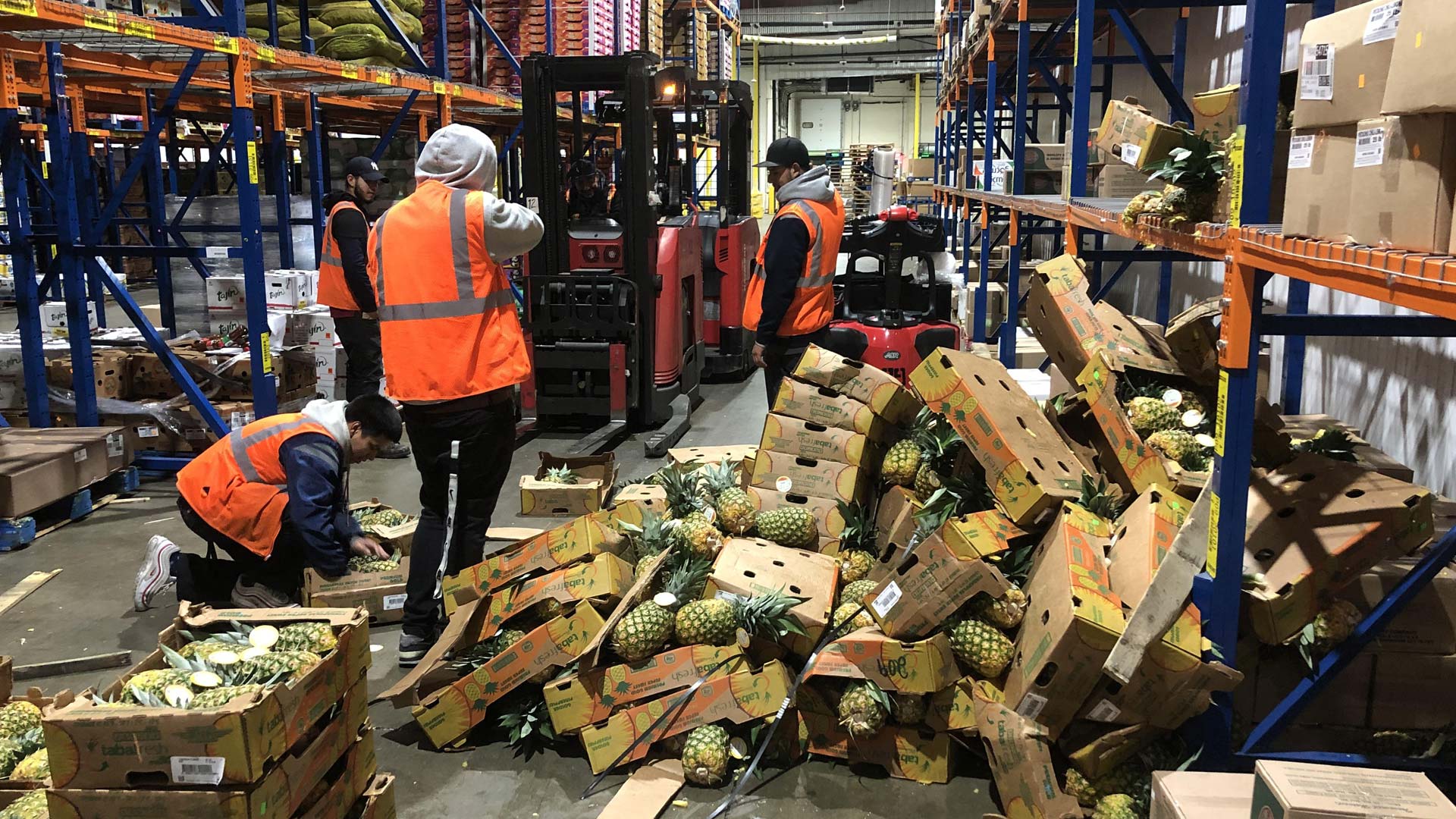WorkSafe QLD issued an incident alert after several pallets fell onto a forklift at a warehouse, seriously injuring the operator.
Preliminary investigations indicate the forklift was stacking pallets onto storage racking when the pallets fell, landing on the forklift’s overhead protection. Falling pallets struck the operator on the back of the head during the incident. Investigations are continuing into the exact cause.

Safety issues
Forklifts are used to lift, stack and transfer loads in warehouses, factories and other workplaces,. Forklifts provide a practical materials-handling solution for many businesses, each year, they are involved in many workplace deaths and injuries.
Hazards associated with forklifts include those arising from:
- power sources – electrical, hydraulic and mechanical
- its load-carrying capacity
- the type of loads being lifted and moved
- the size of the operating area and the slope or evenness of the ground
- blind spots created by the mast and other parts of the forklift.
- Instability – for example, carrying an unevenly balanced load; braking too quickly with a load; braking or accelerating while cornering; or striking low doors or overhead structures.
Ways to manage health and safety
Effective risk management starts with a commitment to health and safety from those who manage the business. If an incident occurs, you’ll need to show the work safety regulator that you’ve used an effective risk management process. This responsibility is covered by your primary duty of care in the Work Health and Safety Act 2011.
Use the hierarchy of controls to help decide how to eliminate and reduce risks in your place of work. The hierarchy of controls ranks types of control methods from the highest level of protection and reliability to the lowest. It’s a step-by-step approach to eliminating or reducing risks. You must work through the hierarchy of controls when managing risks, with the aim of eliminating the hazard, which is the most effective control.
Possible control measures to prevent similar incidents
Effective control measures for forklifts are often made up of a combination of controls. Some common risk control measures can include but not limited to the following examples.
Related Reading
Worker Falls from Raised Forklift
Forklifts
- Forklifts should only be operated in accordance with the manufacturer’s specifications.
- Use a load backrest extension when handling high or segmented loads.
- Before moving the load, ensure it is secure and stable.
- Ensure loads are within the rated load capacity of the forklift at different lift heights and positions.
- Consider installing forklifts with swivel chairs and/or closed-circuit video systems to reduce neck-craning and twisting.
- Ensure road surfaces are even and in good condition.
- Ensure the forklift seat is in good condition to minimise vibration and jolting, that it supports the back and has sufficient cushioning, and that the cabin is in good condition.
- The operator must hold a high risk work licence to operate a forklift truck or be an authorised trainee.
- Provide information, training, instruction and supervision to workers who will use the forklift including developing safe work procedures in accordance with the manufacturer’s instructions.
- Consult workers to obtain feedback on the forklift along with associated work processes and safe work procedures.
Racking
- Racks must be structurally sound and designed for the maximum load they will carry.
- Ensure that the design and installation of racking allows ready access to stock.
- Bollards should be erected at the ends of the racking to prevent structures from being bumped and damaged by a pallet jack or forklift.
- Physical barriers like railings, guards, bollards or posts should be installed to protect against impacts from falling items from racks, or vehicles and mobile plant such as forklifts or pallet jacks.
- The control measures you put in place should be reviewed regularly to make sure they work as planned.
More information
- How to manage work health and safety risks Code of Practice 2021 (PDF, 0.65 MB)
- Managing risks of plant in the workplace Code of Practice 2021 (PDF, 1.67 MB)
- Forklift safety – reducing the risks (PDF, 0.27 MB)
- Forklift safety for workers (PDF, 0.38 MB)


